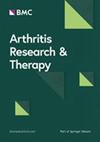NMOSD患者并发Sjögren病:对神经系统疾病严重程度和复发的影响
IF 4.6
2区 医学
Q1 Medicine
引用次数: 0
摘要
我们的目的是在存在和不存在干燥病(SjD)的情况下表征视神经脊髓炎谱系障碍(NMOSD)的表型,并在单个三中心NMOSD患者队列中开发预测nomogram来评估并发SjD的风险。比较NMOSD合并SjD与非SjD患者的临床和临床特征。利用Zstats v1.0将参与者按7:3的比例随机分配到衍生组(108例)和验证组(47例)。使用逻辑回归分析来评估我们的预测模型的有效性,并创建了一个nomogram来说明研究结果。横断面招募血清AQP4-IgG阳性的NMOSD患者155例(合并SjD的NMOSD患者70例[45.16%],未合并SjD的NMOSD患者85例[54.84%])。合并SjD的独立预测因子为入职时的年龄(P = 0.002);扩展残疾状态量表(EDSS)评分(P = 0.023);血白细胞计数(WBC) (P = 0.049);类风湿因子(RF) (P = 0.049)、抗ssa (Ro)、抗ssb (La)抗体阳性(P < 0.001);p = 0.012)。衍生队列的受试者工作特征(ROC)曲线下面积(95%置信区间[CI])为0.95(0.89,1.00),验证队列的受试者工作特征曲线下面积(AUC)为0.91(0.79,1.00)。生存曲线分析显示,NMOSD合并SjD患者的EDSS评分与临床复发相关,EDSS评分比无SjD患者早4.0分。NMOSD合并SjD的患者在发病时表现出更严重的疾病,并且比无SjD的患者更早复发。结合入职年龄建立的nomogram (nomogram);eds分数;血白细胞计数;RF、抗ssa (Ro)、抗ssb (La)抗体水平可显著预测NMOSD合并SjD的风险。本文章由计算机程序翻译,如有差异,请以英文原文为准。
Concomitant Sjögren’s disease in patients with NMOSD: impacts on neurologic disease severity and recurrence
We aimed to characterize the phenotype of neuromyelitis optica spectrum disorder (NMOSD) in the presence and absence of Sjogren's disease (SjD) and to develop a predictive nomogram to evaluate the risk of coexisting SjD within a single tertiary-center cohort of NMOSD patients. Paraclinical and clinical features of patients with SjD were compared between NMOSD patients with SjD and those without SjD. Zstats v1.0 was utilized to randomly allocate participants into a derivation group (108 patients) and a validation group (47 patients) at a ratio of 7:3. Logistic regression analysis was used to assess the effectiveness of our predictive model, and a nomogram was created to illustrate the findings. A total of 155 NMOSD patients who were serologically positive for AQP4-IgG were cross-sectionally recruited (70 NMOSD patients with SjD [45.16%] and 85 NMOSD patients without SjD [54.84%]). Independent predictors of coexisting SjD were age upon recruitment (P = 0.002); Expanded Disability Status Scale (EDSS) score (P = 0.023); blood white blood cell (WBC) count (P = 0.049); and rheumatoid factor (RF) (P = 0.049), anti-SSA (Ro), and anti-SSB (La) antibody positivity (P < 0.001; P = 0.012). The nomogram had an area under the receiver operating characteristic (ROC) curve (AUC) (95% confidence interval [CI]) of 0.95 (0.89, 1.00) in the derivation cohort and 0.91 (0.79, 1.00) in the validation cohort. Survival curve analysis revealed that the EDSS score in the NMOSD patients with SjD was associated with clinical relapse, and these patients reached an EDSS score of 4.0 earlier than those without SjD. NMOSD patients with SjD manifested more severe disease at attack and relapsed earlier than those without SjD. The nomogram established by combining age upon recruitment; EDSS score; blood WBC count; and RF, anti-SSA (Ro), and anti-SSB (La) antibody levels can significantly predict the risk of NMOSD combined with SjD.
求助全文
通过发布文献求助,成功后即可免费获取论文全文。
去求助
来源期刊

Arthritis Research & Therapy
RHEUMATOLOGY-
CiteScore
8.60
自引率
2.00%
发文量
261
审稿时长
14 weeks
期刊介绍:
Established in 1999, Arthritis Research and Therapy is an international, open access, peer-reviewed journal, publishing original articles in the area of musculoskeletal research and therapy as well as, reviews, commentaries and reports. A major focus of the journal is on the immunologic processes leading to inflammation, damage and repair as they relate to autoimmune rheumatic and musculoskeletal conditions, and which inform the translation of this knowledge into advances in clinical care. Original basic, translational and clinical research is considered for publication along with results of early and late phase therapeutic trials, especially as they pertain to the underpinning science that informs clinical observations in interventional studies.
 求助内容:
求助内容: 应助结果提醒方式:
应助结果提醒方式:


